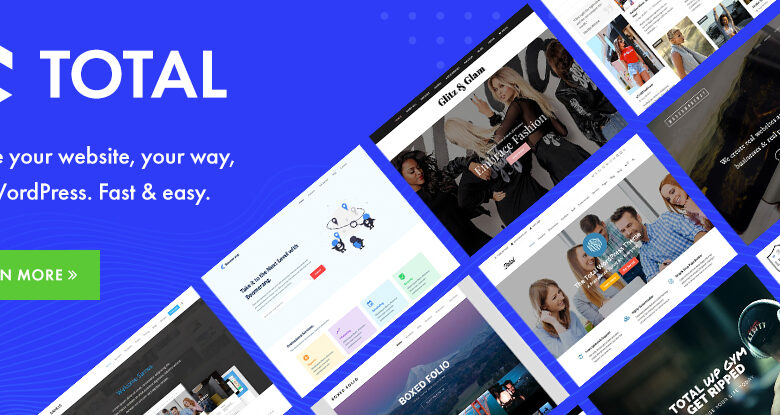An online portfolio provides examples of your work and provides examples of your style. It’s often the first port of call for people seeking to hire you.
If you’re a freelancer, an online portfolio provides examples of your work and allows people to contact you to offer employment.
As a student, your online portfolio may be the first port of call for prospective employers, and if you are a professional designer who works in a studio, an online presence means you can showcase some of your work, creating an online presence.
What to consider when building up your portfolio
Make it attractive. As a designer, you are showing off what you can do. An attractive portfolio website enables you to show your skills. Use bold fonts, illustrations, animations, and whatever you have in your toolbox to convince clients to hire you.
Include the most important elements of your work. If you’re an illustrator, show off what you can do, explain your niche, and make your work clear to those who might not have an insider’s perspective.
Ensure that it is user-friendly. The more easily potential clients are able to navigate your blog or portfolio, the more easily they will be able to engage with your platform, or find important details.
Provide a clean layout, which helps users to find the sections of your work they are most interested in.
How to create an effective online portfolio
Design a logo
A logo provides you with a sense of identity and helps to define your brand, providing a visual representation of who you are and what you do.
Placed on your website, it will be the first thing your visitor sees. You could place it on the upper left-hand side of the page (so that it will be seen when the eye moves from left to right).
Alternatively, you can create a sense of hierarchy, placing your logo at the top center of your page, so that it makes a large statement. Your logo will make it clear who owns your site.
Present yourself as a brand
Branding yourself means sharing who you are, your strengths, weaknesses, and personality. Share with your online viewers. Let them know what motivates you, what makes you curious, and where your talents lie. Be true to yourself. Let your readers see you for who you are.
If you don’t enjoy writing blogs, don’t do it. Let your visitors see your images or illustrations instead. Let your viewers see where you shine. Present a unified front to the world. Consistency is key.
Look at how others are doing this and inspire yourself from their work.
Make it personal
Make your site personal. The more you share with your readers about your education, background, how long you’ve been in the business, and where you hope to go, the more your users will get to know and therefore trust you.
Allow your viewers to see awards you’ve won or any achievements you’ve made. After all, if they know where your talents lie, they will understand more clearly what you could offer them.
Maintain a blog
A blog is an online journal which provides a portfolio to readers. You can write, or present images of your work, projects you are interested in, or ideas that inspire you.
Your blog can share your areas of expertise and will prevent your website from lying static.
Highlight your interests and future goals
When you let your clients know of the job you want, highlighting areas that interest you, you’re letting your clients know where you’re going.
If you’re interested in web design, share this. If illustration is your goal, let your clients know. Focus on your niche market.
This means you’ll gain a following of people who share similar interests, and you will more easily be able to anticipate your clients needs even before meeting them.
Share your best work
Less is more when showcasing your work through an online portfolio. You want clients to see your best work. Your online viewers may be impatient, and won’t have time to look through a great deal of work.
Place the spotlight on work you are most happy with. This will help you to create a good impression. Your portfolio should represent you at your best.
Share your process
Once you’ve chosen your best work, let your viewers see how it has been presented or put together. You could show your early design stages, a story or mood board which assisted you with planning your project, or your project in the early stages of development.
Present the whole piece or finished product first, then allow your viewers to see photo shots of your developing work. You could use stylized photography, as long as it doesn’t distract your readers.
Use social networking websites
Social networking websites allow your viewers to interact or hold conversations with you.
Encourage those interested in your work to follow you on Twitter, Facebook, Linkedin or Instagram. This will assist you in building a following of people who may become future clients.
Sell yourself
What other creative talents do you have?
If you are an illustrator, but you are also able to produce animation, let your viewers know. Provide examples on your website so that you can maximize your talents.
Keep your portfolio dynamic
Once you’ve developed a killer portfolio, remember to keep updating it. You’ll maintain interest if you keep your followers updated on what you’re doing, and what continues to spark your interest. Remember to keep editing your sites as your interests change and your work develops.
If you don’t have a portfolio website already, or if you do have one but you don’t like spending time updating or maintaining it, we’d suggest that you use a framework to avoid CSS & HTML problems, but also redirects issues caused by some plugins.
Be original
Designing your own site and letting your readers get to know you create a unique product. It might take a while to know what you would like to do, and how you’d best like to present yourself, but don’t feel tempted to copy.
A unique and personalized site will enable your readers to interact with you, creating a sense of warmth and loyalty.
Ensure your site loads quickly

Online viewers are impatient, and if a site doesn’t load quickly (within less than three seconds) they will often abandon it and go in search of a different option.
Choose a suitable site hosting package which allows for your page to load quickly. Avoid having a slow site.
Some tips
Share your location. This can help clients to assess where you are from, and some clients prefer working with people who are operating from a similar time zone.
Validate your website code. If you’re going to be building sites for clients, show them your own code is valid.
If you don’t have a large portfolio, share what you have, and guide clients towards your interests. You could also interact with other designers on a platform like Twitter.
Use a narrative style to tell a story about yourself and your work. This enables interaction with readers or potential clients.
Explain your niche, and what makes you unique. This is particularly important for people who are not in the industry but would still potentially make use of your services.
Create a backstory of how you got into your work, and what motivated you. How did your passions develop?
Show how you have connections throughout the creative world. Share your clients, any press or publications.
Be approachable. Let your clients know who you are, the hobbies and interests you have, and some of your pleasures. This creates a sense of warmth and allows your readers to relate to you.














Leave a Reply